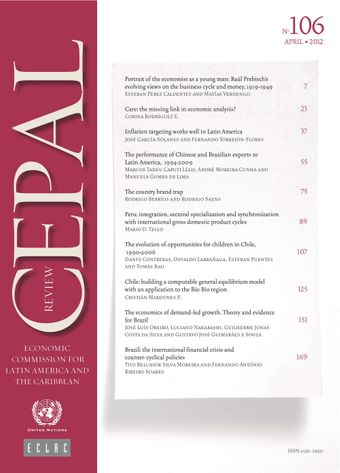-
Peru: Integration, sectoral specialization and synchronization with international gross domestic product cycles
- Source: CEPAL Review, Volume 2012, Issue 106, May 2012, p. 89 - 106
- Spanish
-
- 05 May 2012
Abstract
This paper analyses the way the integration of trade, finance and sectoral specialization relates to the degree of synchronization between the gross domestic product (gdp) cycles of Peru and those of the 31 countries with which it trades most. The analysis is based on estimation of a system of simultaneous equations with panel data in which account is also taken of the repercussions of preferential trade agreements (ptas). The findings reveal robust two-way relationships between synchronization and financial integration, between the latter and trade integration, and between trade integration and sectoral specialization. ptas did not influence the different variables considered. This evidence suggests that greater trade integration in Peru would intensify the effects of partner countries’ gdp cycles on Peruvian output in contexts like the 2008 and 2010 crises.





